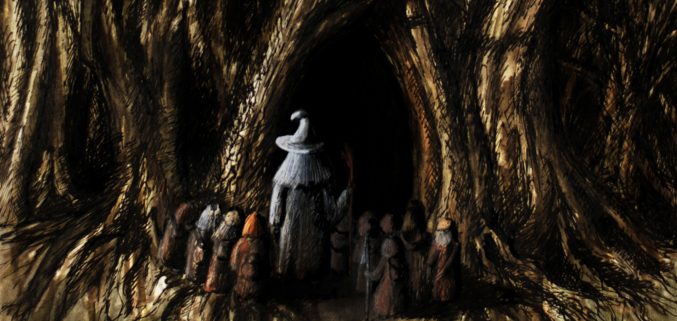
January 18, 2016, by Sunita Tailor
King Canute’s Roots in Mirkwood
This blog was written by Professor Judith Jesch in anticipation of the Fell-Benedikz Lecture taking place 29 January 2016.
King Canute is today best known for the apocryphal story in which he demonstrates to his courtiers that he cannot hold back the tide. But more significantly, a thousand years ago this year, he became the first Viking king of all England. And he was king of Denmark and Norway, too. His father, Sveinn Forkbeard, was a successful warrior king, who died in Gainsborough in Lincolnshire in 1014. Sveinn’s father was Harald Bluetooth, after whom the wireless technology is named, its logo formed of his initials in runes. Harald’s father Gorm is mentioned on two rune-stones that stand in the massive Jelling monument in Denmark. Before Gorm, however, the family’s history is more obscure. Like many parvenu royal dynasties, an origin myth grew up around them, starting with a story reminiscent of those of Moses, or Scyld Scefing (of Beowulf fame). But this was not a baby in a basket, but a foundling in a forest.
Once upon a time, a certain Danish king Gorm, who was childless, sent his courtiers south to get some wine. On their way back, they spent the night in a forest called Myrkviðr (‘Dark Wood’). Hearing the cry of a child, they eventually found a baby boy wrapped in a linen cloth which was tied in a knot on his breast. On unwrapping the cloth, they found three gold rings, and another cloth in which the child was wrapped, this time of silk. King Gorm adopted the child and named him Knútr, which means ‘knot’, from the knotted linen cloth in which he was found. Knútr eventually became king of Denmark and ancestor of all the kings mentioned above, including Canute, whose Old Norse name was also Knútr.
This story appears only in some of the more fantastical Icelandic sagas about the kings of Denmark and the forest of Myrkviðr is not a specific location but a mythical and usually dangerous place. In Old Norse myth the enemies of the gods come riding through Myrkviðr at Ragnarök and it is also imagined as a great forest in the south where the Migration Age heroes of Eddic poetry lived. Most famously, it provided the inspiration for the eerie forest of Mirkwood in Tolkien’s The Hobbit, traversed successfully but with difficulty by Bilbo Baggins and the dwarves.
To hear more about Mirkwood and how Old Norse myth and legend inspired both medieval and modern writers, come along to the 2016 Fell-Benedikz lecture, given by Matthew Townend, on Friday the 29th of January at 6 pm. For related events, check out the website of the Centre for the Study of the Viking Age, or follow us on Twitter @UoNCSVA.
No comments yet, fill out a comment to be the first

Leave a Reply